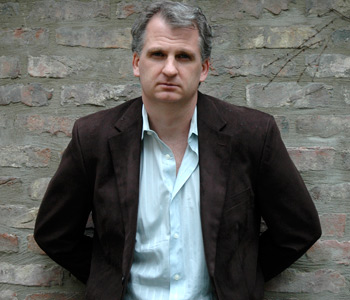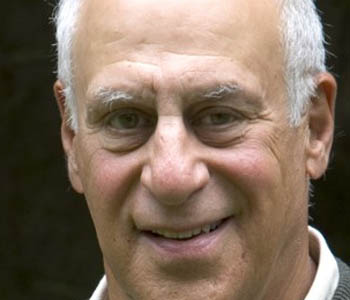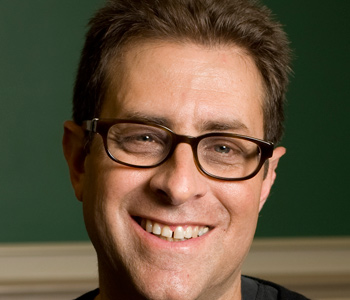Françoise Baylis
Altered Inheritance: CRISPR and the Ethics of Human Genome Editing
Harvard University Press
304 pages, 5 1/2 x 8 1/4 inches
ISBN 978 0674976719
On December 30, 2019, the Chinese scientist Jiankui He was sentenced to three years in jail and fined three million yuan. His crime? Creating the world’s first CRISPR-edited babies. My book Altered Inheritance offers an ethical perspective on the science and politics leading up to the births of these children.
CRISPR (pronounced “crisper”) is the acronym for clustered regularly interspaced short palindromic repeats. This new technology allows scientists to remove, add or alter DNA in living organisms. Scientists are excited about this technology because it is faster, more accurate, more efficient and cheaper than previous genome editing technologies.
With this technology scientists can make genetic changes to our somatic cells (changes that die with us), or changes to our germ cells (changes that we pass on to our children). Somatic cells are all of our non-reproductive cells and changes to these cells are not heritable – meaning they will not be passed down through the generations. Germ cells are our reproductive cells – gametes (egg and sperm) and the cells that make gametes. Changes to these cells are heritable. As well, heritable genome editing can involve the use of early stage embryos.
Both types of human genome editing can be used for health-related reasons (treatment or prevention) or non-health related reasons. The genetic changes could be for treating patients, preventing disease transmission, or pursuing various enhancements.
In exploring questions about the ethics and governance of human genome editing, I discuss the potential benefits, harms and wrongs of this technology. In this discussion I pay attention to the unique potential harms to women research participants. I then invite the reader to consider: the merits of ‘slow science’, which is about taking time to reflect on the BIG questions; the role of experts in policy making; the value of a global moratorium on heritable human genome editing; and the importance of broad societal consensus in deciding where to from here.
In my view, the human genome belongs to all of us and we should all have a say in whether, and if so how, to pursue genome editing technology. All of us – scientists, science funders, civil society (including non-governmental and not-for-profit organizations, community groups, indigenous groups, charitable organizations, and faith-based organizations), interested citizens who are not formally aligned with any interest group, artists, and biohackers – need to think carefully about “what kind of world we want to live in” and whether human genome editing technology can help us to build that world.
Altered Inheritance is a call to action. A call for scientists to slow down and exercise their moral imagination. A call for all of us to take collective responsibility for our biological and social future.
Champions of heritable human genome editing often speak of the right to have children. From their perspective, access to heritable human genome editing is a reproductive right, and couples who are at risk of having children with a heritable disease should be able to use this technology so that they might have healthy children.
In opposition to these views, it is frequently noted that there are safer and simpler ways of having healthy children including, for example: in vitro fertilization (IVF) using disease-free donor eggs, sperm, or embryos; or IVF using one’s own gametes followed by pre-implantation genetic diagnosis to screen out embryos with genetic disease. Objections to the first of these two options generally focus on the desire for genetically-related children. Objections to the second option generally focus on the handful of couples globally who cannot make healthy embryos using their own gametes and for whom pre-implantation diagnosis to identify healthy embryos is therefore not an option.
Other champions of heritable human genome editing wax eloquent about scientific freedom and serendipity. They believe that scientists should be free to ask and answer all questions. Only in this way can science be independent of major political and financial powers.
This book defends the idea that decisions about whether to proceed with heritable human genome editing are too important to leave to scientists. A central claim in the book is that “the human genome belongs to all of us” and that we should all have a say in what happens. It is not for the elites to determine the future of our species.
Metaphorically speaking, the human genome is the one thing we all have in common and, as such, all have a common interest in. This idea undergirds claims made by me and others to the effect that the human genome is the common heritage of humanity. From this perspective, the pivotal concern is not “who has a right to do what?” but rather “how might the use of this technology promote the common good?”
I write, “[w]e all have a stake in how human genome editing might be developed and used. For this reason, we should all have an opportunity to reflect on and contribute to decision-making about a possible new world in which human genome editing is used to eliminate, introduce, or modify genes.” Altered Inheritance promotes both science literacy and ethics literacy and thereby aims to empower all readers so that they can effectively contribute to discussion and debate about the ethics and governance of heritable human genome editing.
My commitment to equity and social justice is the fruit of a 30-year career in bioethics. My PhD is in philosophy and I have worked full-time in a think tank, a hospital, a philosophy department, and a medical school. These rich and diverse experiences have allowed me to witness and reflect upon injustices and to develop a fondness for a future characterized by neighborliness, reciprocity, social solidarity, and community.
This is my last book; I will not write another. I say this with confidence because I have poured into this book pretty much all that I know and care about. I have drawn on my writings on the ethics of human embryo research, human embryonic stem cell research, reproductive ethics, research involving women, in vitro fertilization (IVF), animal human chimeras and hybrids, human cloning, mitochondrial donation, ethics consultation, public health, the common good, decision making by consensus, and integrity-preserving compromise. I have also drawn on my experiences with various policy initiatives on assisted human reproduction, stem cell research, research involving humans and human genome editing.
If someone were fanning through the pages of this book at a local bookstore or library, I would encourage them to peruse the first chapter “Targeting a Single Gene: Huntington’s Disease” which is focused on somatic cell genome editing (non-heritable genome editing) and then to look at chapter three, “Babies by Design,” which is focused on heritable germline genome editing.
The first chapter tells the story of Boston police officer Joe O’Brien, his diagnosis of Huntington’s Disease, and the subsequent knowledge that two of his four adult children have inherited the disease. Typically, people die of this progressive brain disorder within fifteen to twenty years after the onset of symptoms. In the coming years, all three will experience involuntary jerking and twitching movements, emotional difficulties, disorganized thinking, problems with walking, coordination, and balance, as well as cognitive and emotional impairment, followed by an early death.
This fictional story, which is told in a novel written by Lisa Genova, is followed by the true story of Jane Mervar. Her husband (Karl Mukka) and daughter (Karli Mukka) have died of Huntington’s Disease. She is left to care for her daughters, Jacey and Erica, both of whom have juvenile Huntington’s Disease. The point of these two stories is to make clear that there are important potential benefits with somatic cell genome editing, if we ever learn to use this technology to treat patients afflicted with serious debilitating, life-threatening diseases.
Chapter three, “Babies by Design” is not about treating patients, it is about genetically manipulating embryos and gametes to have the children we desire. This chapter reviews the history of assisted human reproduction and the early days of genetic selection. It explains how we are moving from “selection” to “design.”
The first genome-edited babies were twins born in October 2018. Their birth became public knowledge in late November 2018. Jiankui He, the architect of the experiment, thought it would be desirable for children to have immunity to HIV infection. He enrolled couples where the male partner was HIV positive and he genetically modified their embryos in vitro to confer resistance to HIV. The experiment involved making modifications to the CCR5 gene. In 2019, a third child was born of this experiment.
Also in 2019, a Russian scientist by the name of Denis Rebrikov announced that he intended to follow in Jiankui He’s footsteps. He planned to do the research with couples where the woman was HIV positive. When he could not find HIV positive women who wanted to get pregnant and to participate in his proposed research, he changed targets. He announced an interest in modifying the GJB2 gene responsible for a type of hereditary deafness.
Efforts to design future generations raise challenging ethical questions. Who decides which traits are desirable and should be introduced, and which traits are undesirable and should be eliminated? At the embryo stage, what is the difference between eliminating traits and eliminating people with those traits (which begins to look like eugenics)? Why expose possible future children to unknown harm from heritable human genome editing by manipulating them at the embryonic stage when these beings do not have to be made, manipulated, and then brought into existence?
If these sorts of questions are of interest, the reader will enjoy chapter three and will be able to think critically about the ethical issues raised in relation to the use of this same technology in somatic cells to treat patients who are suffering.
Should we be excited, cautious, or fearful about designing future children? Should we be aggressively trying to take over the human evolutionary story by genetically modifying our descendants? Is it reasonable to think that designing the (near) perfect human is a project we should embrace? Or, do we need to introduce strong global regulations to prohibit, or seriously limit, efforts to control the biology of future generations?
We need time to think carefully and critically about such questions. More precisely, we need “time to consult, to deliberate, to question, to investigate, to interpret, and to respond.” For this, we need slow science.
But slow science is a challenge insofar as it is clearly in tension with dominant practices in science where there is increasing competition and corporatization in response to the political and commercial drive to build knowledge economies. But at what cost do we keep racing about without knowing or understanding where we are racing to? In November 2018, after the surprise revelation that genome-edited twins had been born, the Organizers of the Second International Summit on Human Genome Editing called for a translational pathway forward — a roadmap from basic research in the laboratory to future research in humans. But do we know which direction is forward? And, who decides?
Though I worry about some of the negative consequences of rampant populism, my answer to this question is “all of us.” This book aims to improve science literacy and ethics literacy so as to broaden the conversation. The longer-term goal is to shift the power dynamics so that the important questions we need to ask and answer about our future are not the purview of select elites.
If we are not able to make this shift, dire predictions of a future bifurcated world may well come to pass – assuming we are able to effectively tackle the current problems of climate change and still inhabit this planet. Consider, for example, the future depicted in the 1997 film GATTACA where there are ‘valids’ (persons who are genetically enhanced) and ‘in-valids’ (persons who are naturally born). Allowing those with economic, social, political, and geographical privilege to entrench their privilege in their DNA — thereby increasing the genetic gap between the ‘haves’ and the ‘have-nots’ — cannot be a good thing, anymore that the current and ever-increasing economic divide between the 1% and the masses. Ultimately these kinds of divides do not bode well for any of us.




We don't put paywalls. We don't distract you with ads. We don't sell your data.
Please help to keep this running!